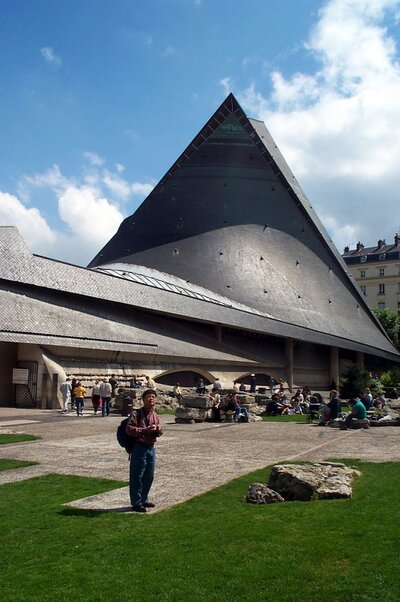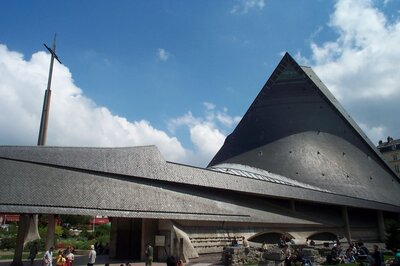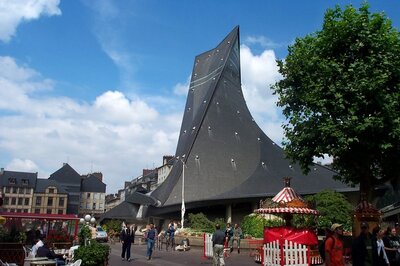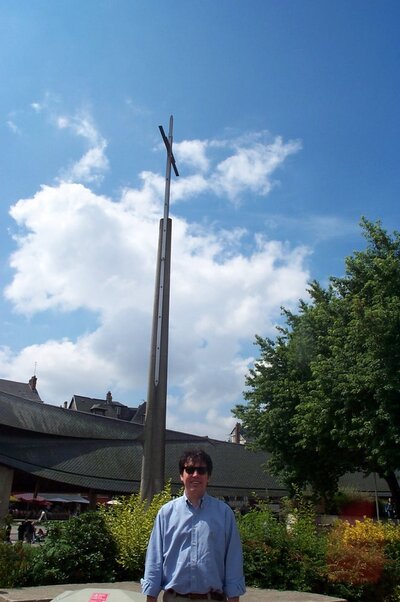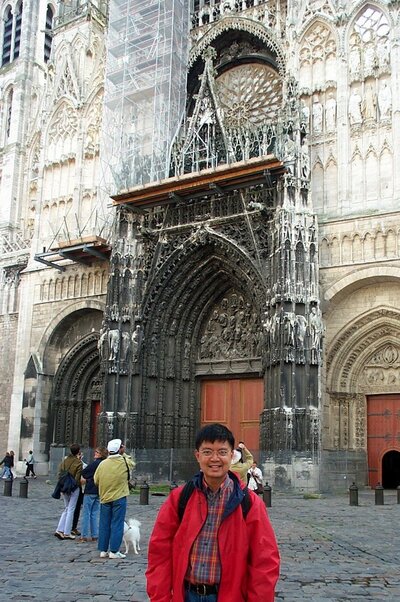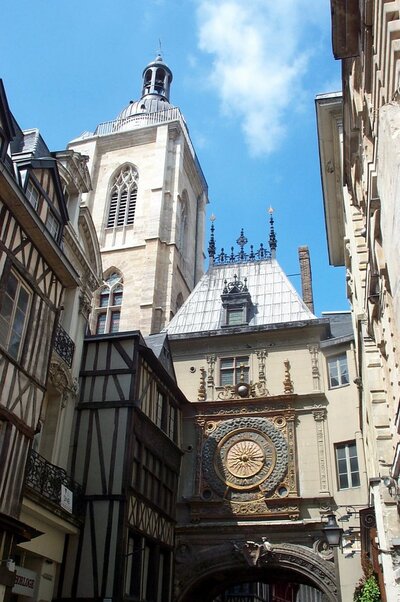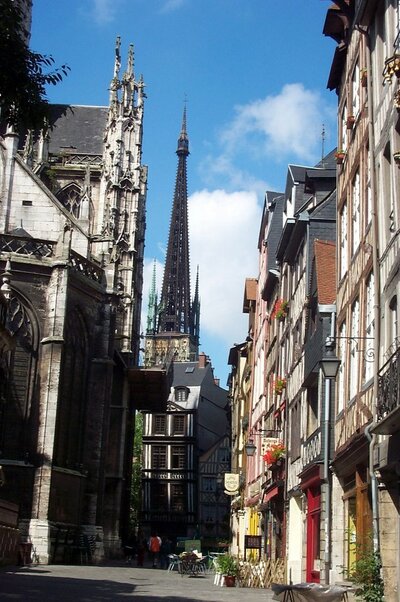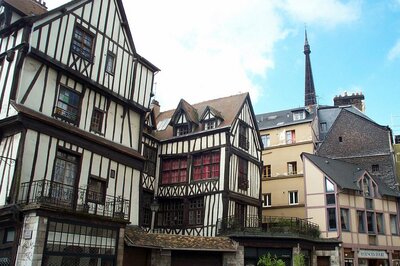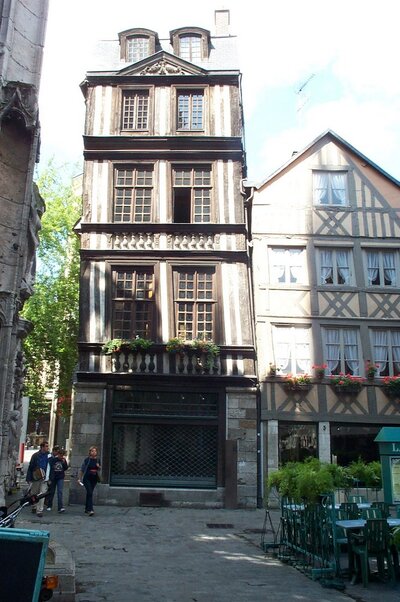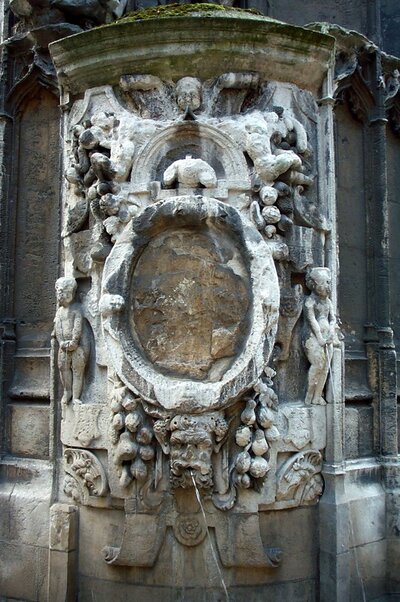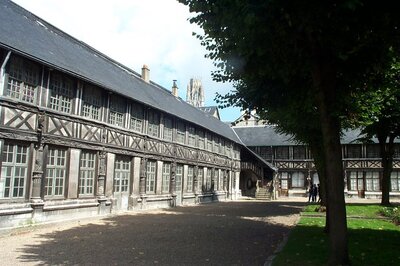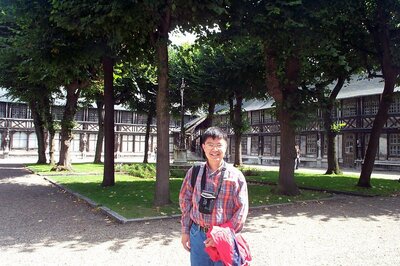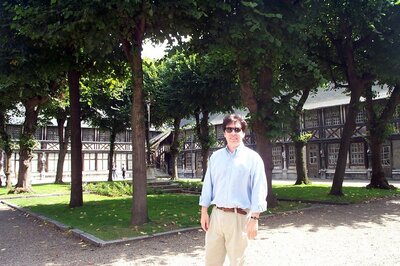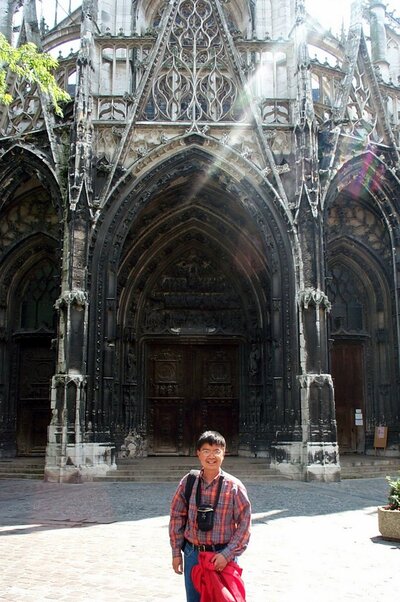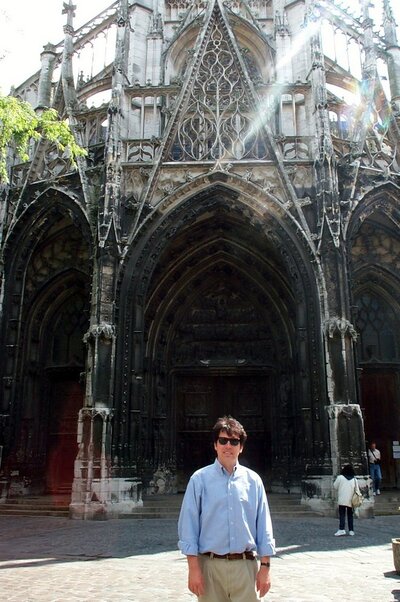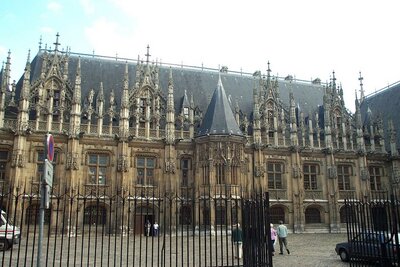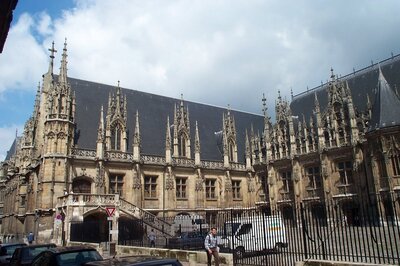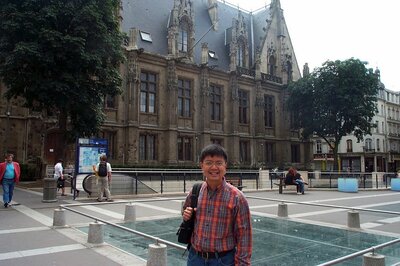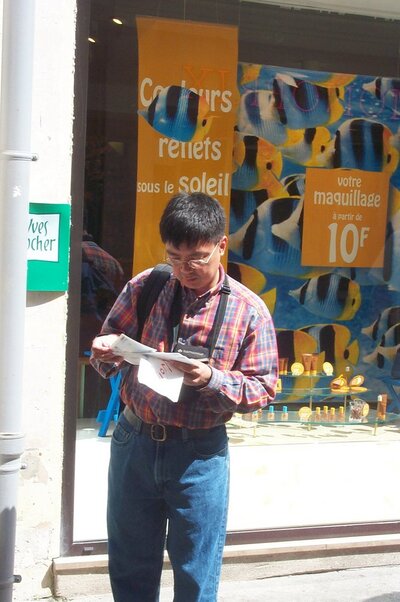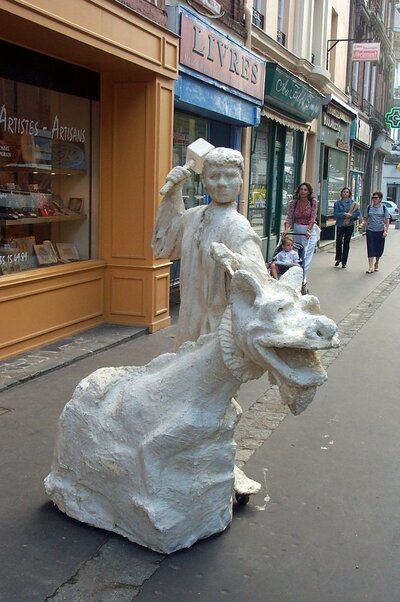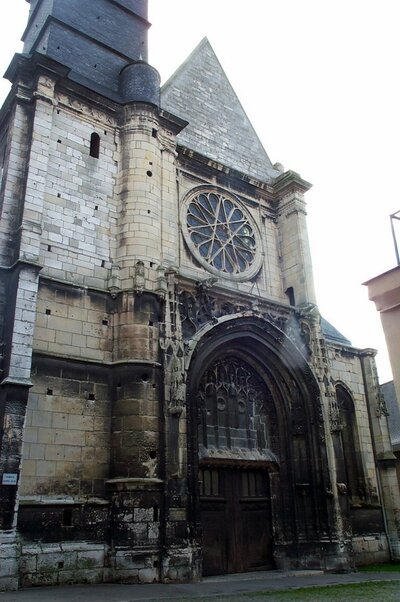Rouen, France
On the first day of our tour of France, we visited Rouen, the ancient capital city of Normandy. It is more famous for its affiliation with Joan of Arc. It was here where Joan of Arc was burned at a stake and where she died last 1431. It was under English occupation back then. The exact spot of the immolation is marked in the pavement in what is now a busy central market area of the city.
Rouen is a place dominated by ecclesiastical structures. They are almost completely Gothic in style built from the thirteenth (13th) to the fifteenth (15th) centuries. These include the famous churches of Saint Maclou (also pictured in this blog entry)and Saint Ouen. The most prominent structure here is the Cathedral of Notre Dame, famous for its contrasting towers.
Le Gros Horloge or the Great Clock adjoins a bell tower and consists of a Rennaisance arch crossing the Rue du Gros-Horloge surmounted by an astronomical clock from the sixteenth (16th) century.
I loved the look of the half timbered houses. I understand that in medieval Europe, many houses had exposed wood framing and the spaces between the wooden timbers were filled with plaster, brick, or stone.
Records indicate that in Rouen there are around 2,000 half timbered houses of which half have been restored. This makes Rouen one of the first six cities in France in terms of historic architecture richness despite the destruction during the Second World War when a fourth of the houses were destroyed by fire.
Rouen is likewise known for its spires. The 15th century Palais de Justice is a strong evidence of this fact.
